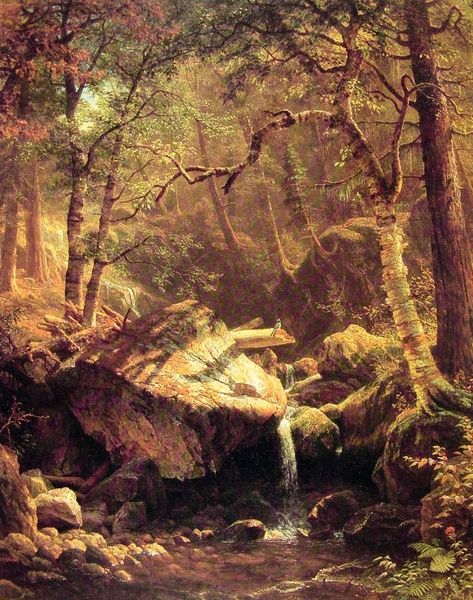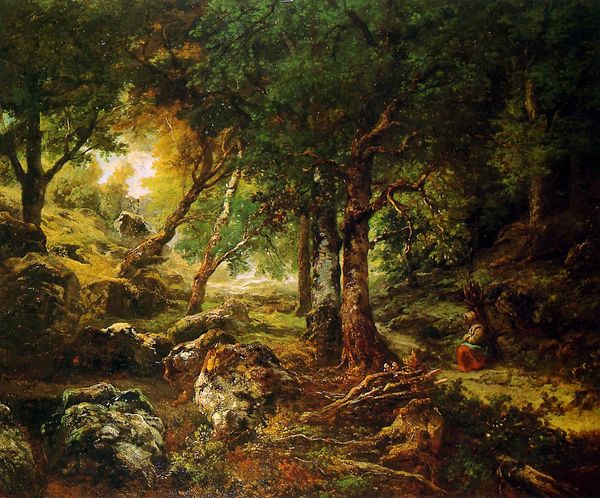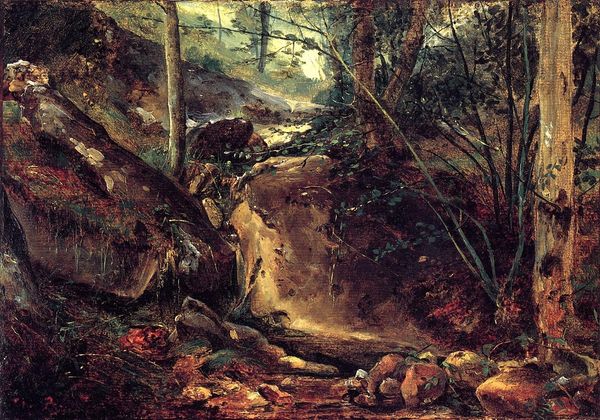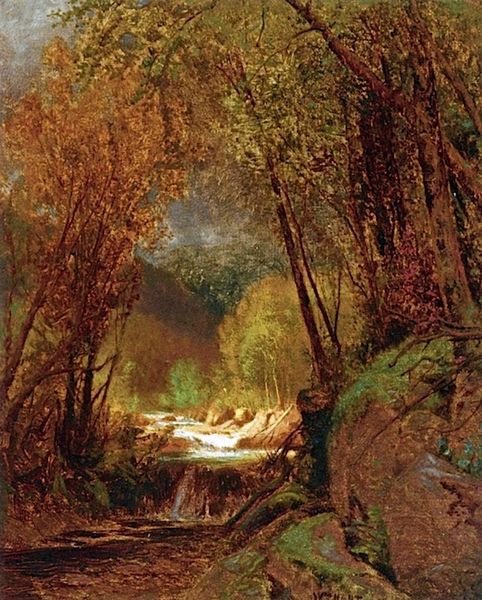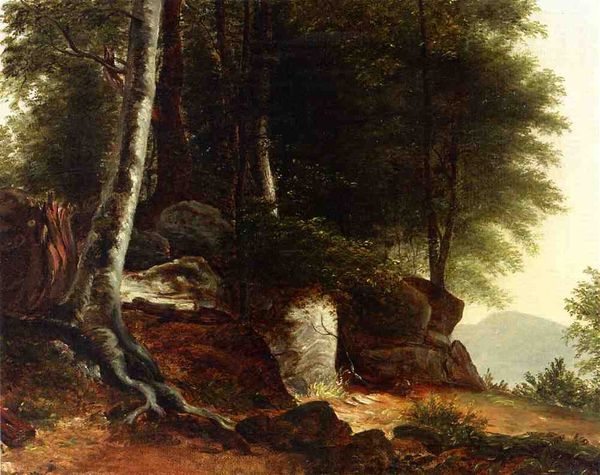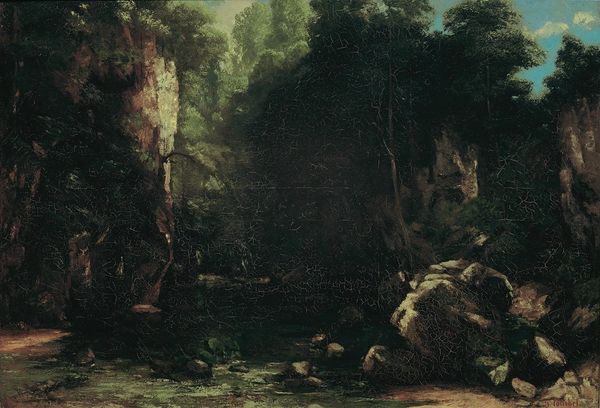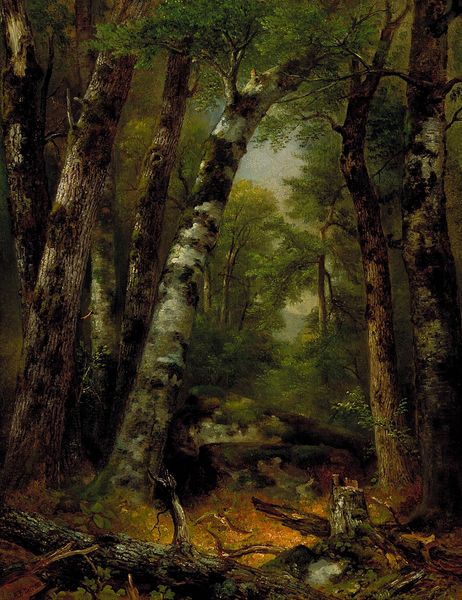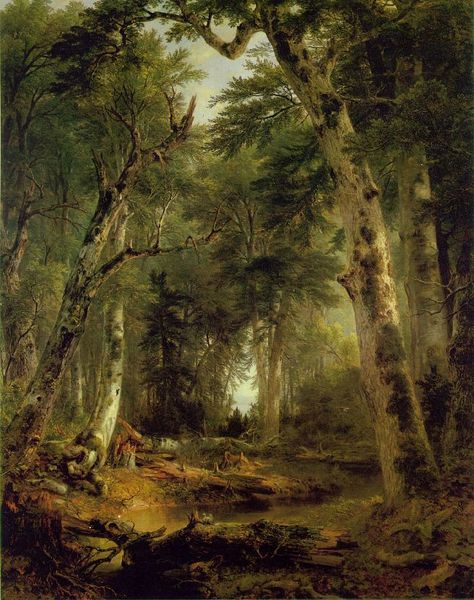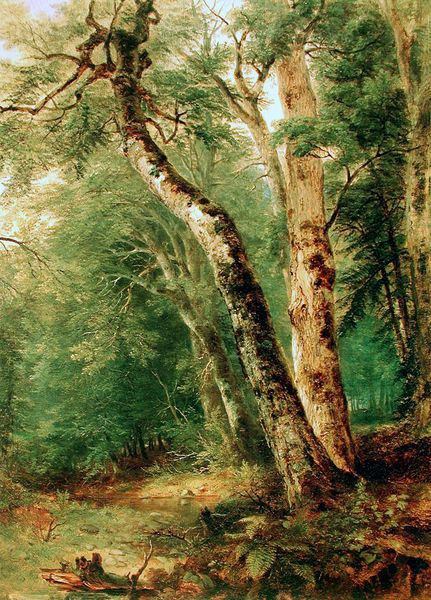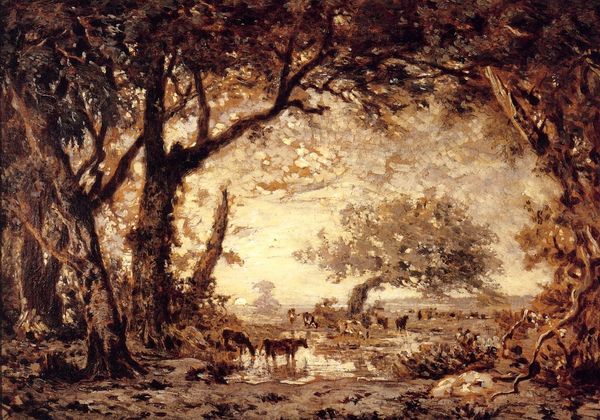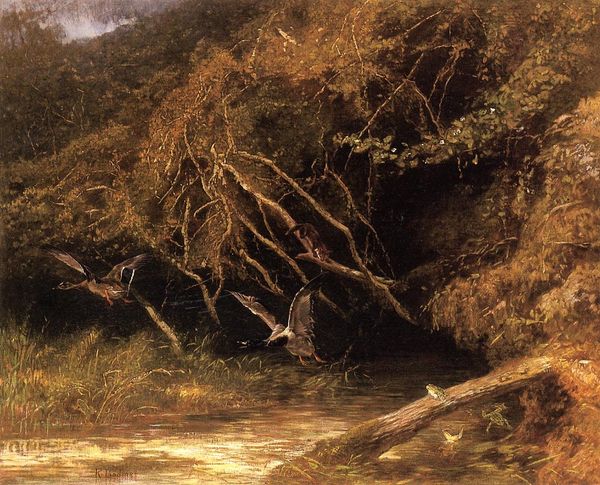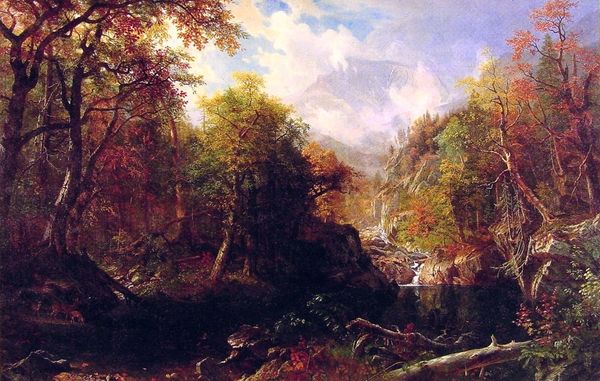
Dimensions: 47 x 38.1 cm
Copyright: Public domain
Editor: So, this is "White Mountains, New Hampshire" by Albert Bierstadt, painted in 1863, using oil paints. The hazy, golden light makes it feel so serene, almost dreamlike. What strikes you most when you look at it? Curator: Immediately, the pronounced chiaroscuro effect captures my attention. Observe how the artist masterfully juxtaposes the dramatically lit foreground against the ethereal glow emanating from the distant waterfall. This interplay of light and shadow doesn't merely depict form; it actively sculpts the pictorial space. Note the placement of the deer—its contour emerges from this contrast. Editor: It does lead your eye right to the deer. Is there something symbolic about that? Curator: Possibly, but first, consider the structure: the horizontal line created by the fallen log bisects the canvas, creating distinct upper and lower registers. The robust texture in the lower half, rendered through impasto, contrasts with the delicate glazing in the background, further emphasizing the luminosity. How does this calculated juxtaposition affect your reading of the work? Editor: It does feel carefully composed, a kind of constructed naturalness. The detailed foreground draws you in, then your eye is released into the airy background. Curator: Precisely! And that leads to the artist's manipulation of spatial depth; rather than pure representation, it presents a constructed vista designed to evoke the sublime through calculated form and masterful arrangement of elements. Editor: That's a great way of understanding it, beyond just its obvious beauty. It's interesting to consider the active decisions behind something that seems so natural and effortless at first glance.
Comments
No comments
Be the first to comment and join the conversation on the ultimate creative platform.
